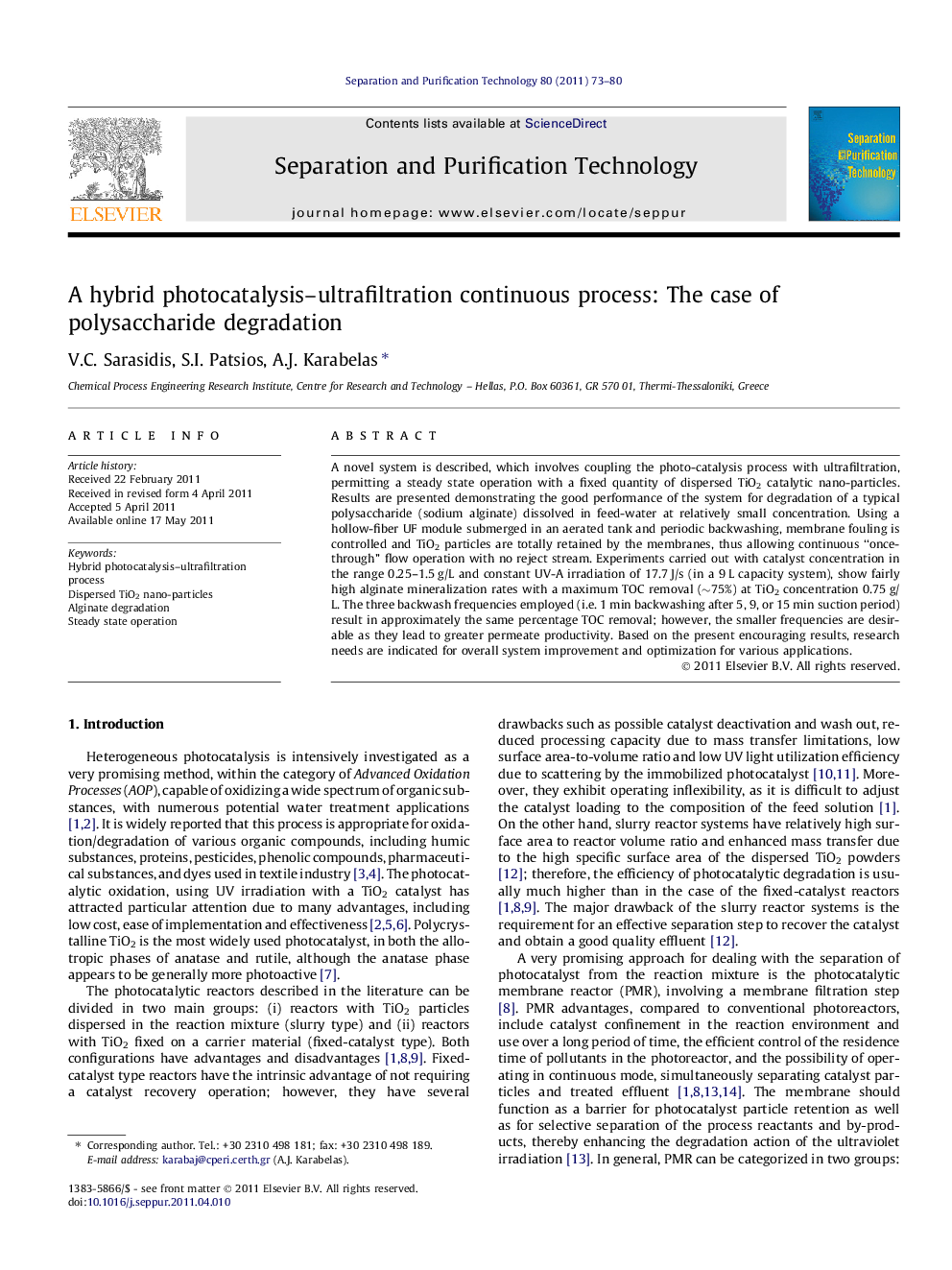| Article ID | Journal | Published Year | Pages | File Type |
|---|---|---|---|---|
| 642576 | Separation and Purification Technology | 2011 | 8 Pages |
A novel system is described, which involves coupling the photo-catalysis process with ultrafiltration, permitting a steady state operation with a fixed quantity of dispersed TiO2 catalytic nano-particles. Results are presented demonstrating the good performance of the system for degradation of a typical polysaccharide (sodium alginate) dissolved in feed-water at relatively small concentration. Using a hollow-fiber UF module submerged in an aerated tank and periodic backwashing, membrane fouling is controlled and TiO2 particles are totally retained by the membranes, thus allowing continuous “once-through” flow operation with no reject stream. Experiments carried out with catalyst concentration in the range 0.25–1.5 g/L and constant UV-A irradiation of 17.7 J/s (in a 9 L capacity system), show fairly high alginate mineralization rates with a maximum TOC removal (∼75%) at TiO2 concentration 0.75 g/L. The three backwash frequencies employed (i.e. 1 min backwashing after 5, 9, or 15 min suction period) result in approximately the same percentage TOC removal; however, the smaller frequencies are desirable as they lead to greater permeate productivity. Based on the present encouraging results, research needs are indicated for overall system improvement and optimization for various applications.
Graphical abstractFigure optionsDownload full-size imageDownload as PowerPoint slideHighlights► A novel system, involving coupling the photo-catalysis process with UF, permits steady state operation. ► Fouling is controlled by periodic backwashing with permeate, ensuring long-term operation with no reject stream. ► Successful operation of a small laboratory pilot is demonstrated for degradation of polysaccharides in water.
